Peugeot 408 vs Volvo EC40 – Differences & prices compared
Compare performance, boot space, consumption and price in one view.
Find out now: which car is the better choice for you – Peugeot 408 or Volvo EC40?
The Peugeot 408 (SUV) comes with a Electric or Petrol MHEV engine and Automatic transmission. In comparison, the Volvo EC40 (SUV) features a Electric engine with Automatic transmission.
When it comes to boot capacity, the Peugeot 408 offers 536 L, while the Volvo EC40 provides 404 L – depending on how much space you need. If you’re looking for more power, decide whether the 214 HP of the Peugeot 408 or the 442 HP of the Volvo EC40 suits your needs better.
In terms of consumption, the values are 15.10 kWh5.10 L per 100 km for the Peugeot 408, and 16.30 kWh for the Volvo EC40.
Price-wise, the Peugeot 408 starts at 34300 £, while the Volvo EC40 is available from 46600 £. Compare all the details and find out which model fits your lifestyle best!
Peugeot 408
The Peugeot 408 captivates with its sleek and dynamic design, setting it apart in the competitive crossover market. Its interior offers a perfect blend of comfort and cutting-edge technology, creating an enjoyable driving experience. The model's efficient performance and modern features make it a compelling choice for those seeking both style and functionality in their vehicles.
details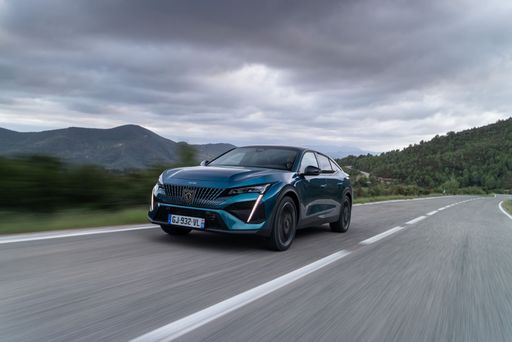 @ media.stellantis.com
@ media.stellantis.com
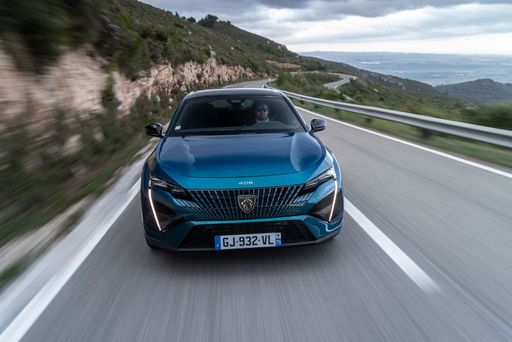 @ media.stellantis.com
@ media.stellantis.com
 @ media.stellantis.com
@ media.stellantis.com
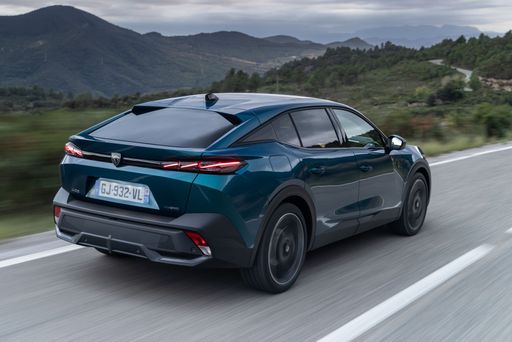 @ media.stellantis.com
@ media.stellantis.com
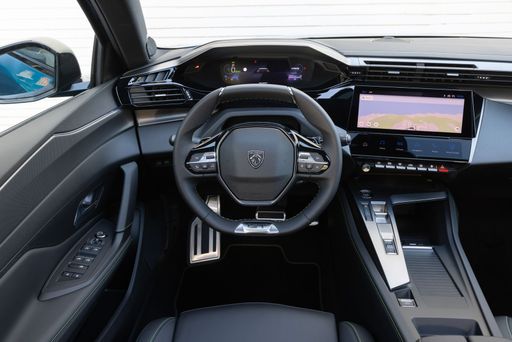 @ media.stellantis.com
@ media.stellantis.com
Volvo EC40
The Volvo EC40 seamlessly combines cutting-edge technology with sleek Scandinavian design, offering a refined driving experience. With its advanced safety features and user-friendly infotainment system, this model caters to both seasoned drivers and modern tech enthusiasts. The vehicle's impressive efficiency and environmentally conscious engineering make it a standout choice for those seeking sustainability without compromising on style.
details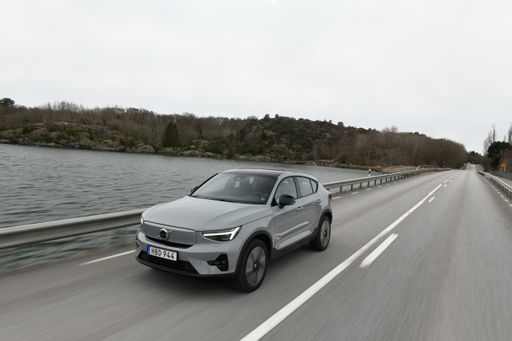 @ media.volvocars.com
@ media.volvocars.com

|

|
|
|
|
Costs and Consumption |
|
|---|---|
|
Price
34300 - 43000 £
|
Price
46600 - 59000 £
|
|
Consumption L/100km
5.10 L
|
Consumption L/100km
-
|
|
Consumption kWh/100km
15.10 kWh
|
Consumption kWh/100km
16.3 - 17.3 kWh
|
|
Electric Range
453 km
|
Electric Range
487 - 583 km
|
|
Battery Capacity
58.20 kWh
|
Battery Capacity
67 - 79 kWh
|
|
co2
0 - 114 g/km
|
co2
0 g/km
|
|
Fuel tank capacity
52 L
|
Fuel tank capacity
-
|
Dimensions and Body |
|
|---|---|
|
Body Type
SUV
|
Body Type
SUV
|
|
Seats
5
|
Seats
5
|
|
Doors
5
|
Doors
5
|
|
Curb weight
1544 - 1879 kg
|
Curb weight
2065 - 2185 kg
|
|
Trunk capacity
471 - 536 L
|
Trunk capacity
404 L
|
|
Length
4687 mm
|
Length
4440 mm
|
|
Width
1848 mm
|
Width
1873 mm
|
|
Height
1478 mm
|
Height
1591 mm
|
|
Payload
371 - 456 kg
|
Payload
395 - 435 kg
|
Engine and Performance |
|
|---|---|
|
Engine Type
Electric, Petrol MHEV
|
Engine Type
Electric
|
|
Transmission
Automatic
|
Transmission
Automatic
|
|
Transmission Detail
Dual-Clutch Automatic
|
Transmission Detail
Reduction Gearbox
|
|
Drive Type
Front-Wheel Drive
|
Drive Type
Rear-Wheel Drive, All-Wheel Drive
|
|
Power HP
145 - 214 HP
|
Power HP
238 - 442 HP
|
|
Acceleration 0-100km/h
7.2 - 9.4 s
|
Acceleration 0-100km/h
4.6 - 7.3 s
|
|
Max Speed
160 - 205 km/h
|
Max Speed
180 km/h
|
|
Torque
230 - 345 Nm
|
Torque
420 - 670 Nm
|
|
Number of Cylinders
4
|
Number of Cylinders
-
|
|
Power kW
107 - 157 kW
|
Power kW
175 - 325 kW
|
|
Engine capacity
1199 cm3
|
Engine capacity
-
|
General |
|
|---|---|
|
Model Year
2024 - 2025
|
Model Year
2024
|
|
CO2 Efficiency Class
A, C
|
CO2 Efficiency Class
A
|
|
Brand
Peugeot
|
Brand
Volvo
|
Peugeot 408
The New Lion on the Block: The Peugeot 408
As Peugeot continues to innovate within the SUV segment, the latest iteration of the Peugeot 408 sets new standards in technology, efficiency, and design. With its cutting-edge engineering and innovative features, the Peugeot 408 is more than just a stylish SUV—it's a marvel of modern automotive technology. This article dives into the technical details and innovations that make the Peugeot 408 a highly compelling choice for consumers in the market for a new vehicle.
A Glimpse into the Engine Bay: Performance and Efficiency
The Peugeot 408 comes with a diverse range of powertrains that blend performance and fuel efficiency. Featuring a selection of petrol mild-hybrid, petrol, and plug-in hybrid options, the 408 caters to a variety of driving preferences. The engines have a power output ranging from 131 to 225 PS, ensuring that there's a version suited to both city commutes and highway cruising.
Fuel economy is a significant focus, with consumption figures spanning from an impressive 1.5 L/100km for the plug-in hybrid models to a moderate 6.1 L/100km for the traditional petrol engines. Additionally, the plug-in hybrid versions boast an electric range of up to 55 kilometres, ideal for reducing emissions during shorter journeys.
Ultimate Comfort and Technology in the Cockpit
Peugeot excels in creating interiors that provide both comfort and cutting-edge technology. The 408 doesn't disappoint in this regard. It offers a spacious cabin, accommodating up to five passengers, with high-quality materials and ergonomic designs that enhance the driving experience.
The infotainment system in the Peugeot 408 is state-of-the-art, featuring a responsive touchscreen interface, premium sound options, and seamless connectivity with smartphones. Advanced driver-assistance systems such as adaptive cruise control, lane-keeping assist, and automated emergency braking ensure that journeys are not only comfortable but also safe.
Design Meets Function: Exterior and Practicality
In the realm of exterior design, Peugeot has delivered a striking silhouette with aerodynamic lines and a robust SUV stance. Measuring 4687 mm in length, 1848 mm in width, and 1478 mm in height, the 408 boasts a dynamic presence on the road without compromising on practicality.
Practicality is further enhanced by a generous boot space that ranges from 471 to 536 litres, depending on the model, making it perfect for family trips or weekend getaways. A high payload capacity and thoughtfully designed storage solutions ensure that the Peugeot 408 remains versatile, able to adapt to various lifestyle needs.
Environmental Responsibility and Sustainable Driving
With a keen eye on sustainability, the Peugeot 408 offers an impressive CO2 efficiency rating. The plug-in hybrid versions, in particular, present a substantial reduction in carbon emissions, operating at as low as 33 g/km. This makes the 408 a viable option for environmentally conscious consumers seeking to minimise their carbon footprint.
The automaker's commitment to sustainability does not end at emissions. The materials used in the 408's construction are carefully selected to promote durability and recyclability, ensuring that the vehicle maintains a lower impact on the environment throughout its lifecycle.
Conclusion: The Perfect Blend of Innovation and Tradition
The Peugeot 408 is a remarkable illustration of Peugeot's ability to blend traditional automotive values with the latest technological advancements. Its innovative powertrains, luxurious interiors, and forward-thinking design make it a formidable contender in the competitive SUV market. Whether you prioritise fuel economy, driving performance, or cutting-edge technology, the Peugeot 408 is poised to meet and exceed expectations. As Peugeot advances into the future, the 408 leads the charge as a testament to the brand's relentless pursuit of excellence.
Volvo EC40
Introduction to the Volvo EC40
The Volvo EC40 has emerged as a standout model in the electric SUV market, embodying a splendid fusion of Scandinavian design and state-of-the-art technology. As part of Volvo’s endeavour towards a sustainable future, the EC40 caters to environmentally conscious drivers who seek a blend of performance, luxury, and innovation.
Powertrain and Performance
The Volvo EC40 is available in both rear-wheel and all-wheel drive configurations, offering a flexible choice for various driving preferences. The model is powered by robust electric motors, with outputs ranging from 238 to 408 PS (175 to 325 kW). This range of power allows for a diverse driving experience, featuring a brisk acceleration from 0 to 100 km/h between 4.6 and 7.3 seconds, appealing to enthusiasts of spirited driving.
Fuel efficiency is a significant advantage of the EC40, boasting a consumption between 16.2 and 17.3 kWh per 100 km. Moreover, the vehicle's electric range impresses with figures stretching from 487 to 584 km, ensuring that long drives are as feasible as they are economical.
Innovative Battery Technology
Equipped with high-capacity batteries ranging from 67 to 79 kWh, the Volvo EC40 leverages advanced battery technology to offer reliability and longevity. This innovation helps in maintaining exceptional energy efficiency while adhering to Volvo’s commitment to reducing environmental impact.
Design and Dimensions
The signature Scandinavian design of the EC40 embodies elegance through its simplistic yet luxurious aesthetics. Its dimensions — 4440 mm in length, 1873 mm in width, and 1591 mm in height — are crafted to provide optimal space and comfort without compromising sleekness. The interior accommodates up to five passengers comfortably, with a boot offering a 404-litre capacity, making it ideal for adventure trips or daily commutes.
Safety and Technology
Volvo has long been synonymous with safety, and the EC40 continues this legacy with an array of advanced safety and driver assistance technologies. The SUV is equipped with cutting-edge features such as automated emergency braking, lane-keeping assistance, and BLIS (Blind Spot Information System), designed to ensure a stress-free and secure driving experience.
Conclusion
The Volvo EC40 stands as a testament to Volvo's dedication to innovation in the automotive industry. With an excellent blend of performance, technology, and efficiency, alongside impressive environmental credentials — including a CO2 efficiency class of A and zero emissions — the EC40 represents a beacon of Volvo’s sustainable future in electric mobility.
The prices and data displayed are estimates based on German list prices and may vary by country. This information is not legally binding.
